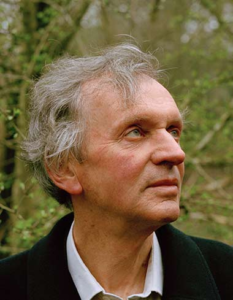Rupert Sheldrake is a biologist and author of more than 80 scientific papers and ten books. He was among thetop 100 Global Thought Leaders for 2013, as ranked by the Duttweiler Institute, Zurich, Switzerland’s leading think tank. He studied natural sciences at Cambridge University, where he was a Scholar of Clare College, took a double first class honours degree and was awarded the University Botany Prize (1963). He then studied philosophy and history of science at Harvard University, where he was a Frank Knox Fellow (1963-64), before returning to Cambridge, where he took a Ph.D. in biochemistry (1967). He was a Fellow of Clare College, Cambridge (1967-73), where he was Director of Studies in biochemistry and cell biology. As the Rosenheim Research Fellow of the Royal Society (1970-73), he carried out research on the development of plants and the ageing of cells in the Department of Biochemistry at Cambridge University. While at Cambridge, together with Philip Rubery, he discovered the mechanism of polar auxin transport, the process by which the plant hormone auxin is carried from the shoots towards the roots.
From 1968 to 1969, as a Royal Society Leverhulme Scholar, based in the Botany Department of the University of Malaya, Kuala Lumpur, he studied rain forest plants. From 1974 to 1985 he was Principal Plant Physiologist and Consultant Physiologist at the International Crops Research Institute for the Semi-Arid Tropics (ICRISAT) in Hyderabad, India, where he helped develop new cropping systems now widely used by farmers. While in India, he also lived for a year and a half at the ashram of Fr Bede Griffiths in Tamil Nadu, where he wrote his first book, A New Science of Life, published in 1981 (new edition 2009).
Since 1981, he has continued research on developmental and cell biology. He has also investigated unexplained aspects of animal behaviour, including how pigeons find their way home, the telepathic abilities of dogs, cats and other animals, and the apparent abilities of animals to anticipate earthquakes and tsunamis. He subsequently studied similar phenomena in people, including the sense of being stared at, telepathy between mothers and babies, telepathy in connection with telephone calls, and premonitions. Although some of these areas overlap the field of parapsychology, he approaches them as a biologist, and bases his research on natural history and experiments under natural conditions, as opposed to laboratory studies. His research on these subjects is summarized in his books Seven Experiments That Could Change the World (1994, second edition 2002), Dogs That Know When Their Owners Are Coming Home (1999, new edition 2011) and The Sense of Being Stared At (2003, new edition 2012).
In his most recent book (2012), called The Science Delusion in the UK and Science Set Free in the US, he examines the ten dogmas of modern science, and shows how they can be turned into questions that open up new vistas of scientific possibility. This book received the Book of the Year Award from the British Scientific and Medical Network.
In 2000, he was the Steinbach Scholar in Residence at the Woods Hole Oceanographic Institute in Cape Cod, Massachusetts. From 2005-2010 he was the Director of the Perrott-Warrick Project, funded from Trinity College, Cambridge University. He is also a Fellow of the Institute of Noetic Sciences in California, a Visiting Professor at the Graduate Institute in Connecticut, and a Fellow of Schumacher College in Devon, England. He lives in London with his wife Jill Purce. They have two sons, Merlin, a graduate student in Plant Sciences at Cambridge University and a research fellow at The Smithsonian Tropical Research Institute, and Cosmo, a musician.
For more information about Professor Sheldrake’s work, please visit his website: http://www.sheldrake.org/
July 13, 2018
Ted’s interview with Rupert on January 16, 2015 (first 30 minutes)

